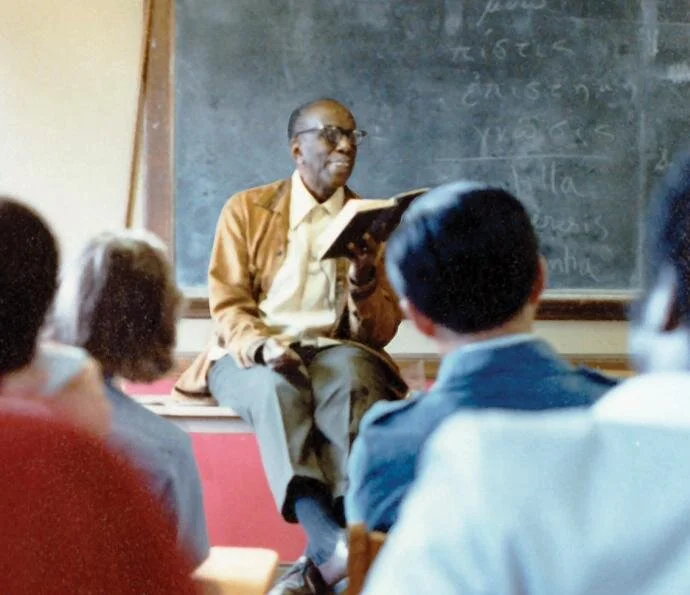St. Teresa de Avila, Part III: Teresa Creates a World and a Way to Pray
Juan de la Miseria, Portrait of Teresa de Jesús
The World that Teresa Created
During her last 20 years, Teresa herself founded 16 monasteries (the Spanish term for nunnery) of a new order throughout Iberia though she claimed she’d been happy at Ávila’s Monastery of the Incarnation.
Why?
She gave three reasons: (1) God called her to do so; (2) she felt cloistered nuns should participate in the war against the Reformation by praying for the souls lost to Martin Luther and for the valiant Roman Catholics fighting all heresy; and (3) that such a war required a more rigorous spiritual life, solitude, and prayer for even monastic religious. For her, that meant returning to the asceticism of the Primitive (Original) Rule of eremitical (hermit) orders. Which consequently meant founding alternative communities within eremitical orders that had relaxed with time.
She was hardly the first: The call to monastic asceticism had grown over the past century, overcoming bitter resistance to become an ideal of the Counter Reformation.
The pull of the eremitical was so strong that a royal princess set an important model with her own community of nuns.
In 1559, the King’s sister, doña Juana, founded a new ascetic branch of Poor Clares (a Franciscan women’s community)—startlingly, in a royal palace in Madrid, the Descalzas Reales [Royal Discalceds]. The term “Discalced” signaled the order’s difference from the present community in reaffirming the original ascetic poverty: “descalzo/a” is the common Spanish word for “barefoot,” the most striking mark of the new community’s asceticism; they otherwise wore rope sandals.
Teresa followed suit, sort of.
Her reformed order received papal approval in 1562 as the Order of the Discalced Carmelites of the Blessed Virgin Mary of Mount Carmel, dedicated to St. Joseph whom she credited with healing her as a young nun.
Instead of an urban royal palace, however, her first monastery was a compact, austere new complex in Ávila, with hermitages in the walled garden for solitude —thus honoring the desert life of the first Carmelites, a criterion of the Primitive Carmelite Rule.
Monasterio de San José
Cloistered courtyard, Monasterio de San José
Teresa adhered to the original friars’ commitment to a cloistered life of poverty and sharing, residence in individual cells for solitude and prayer, solitary prayer in the morning and afternoon, silence during the day around liturgical hours, simple but productive work for all (including the Prioress), and communal recreation after later meals (no meat).
Though drilled into novices as their Rule and Constitution, these requirements were treated as flexible guides simply for structure. They shaped a life of solitude, equality, and freedom for nuns who, unlike the Descalzas Reales, included even the poor and illiterate, Teresa claimed.
Her directions for the community’s engagement among themselves were simple: be humble in all, love your sisters equally, and be detached from material things and outside social bonds.
Most of all, she urged them to commit to solitude and prayer. Teresa, in turn, committed to teaching them to pray. Her way.
Teresa’s Way of Prayer
Teresa’s way adapted earlier sources to her own experience, both bumpy and rewarding. She drafted several manuscripts on the subject for her nuns and novices (notably The Way of Perfection and The Interior Castle). They were offshoots of her reports about her approach to prayer for Inquisitors who learned of its difference.
For her, there was NO ONE way to pray after basic preparation. Some essentials about the relationship with God, however, defined everything.
She parried their fear of devils, temptation, and turmoil with the assurance that prayer brings the joy of a mutual love with God that protects and strengthens. For her, seeking God through prayer is turning to a loving constant with our own capacity to love. He is always there within, waiting for us to enter into dialogue.
Prayer, for her, is simply a conversation with God in different forms and circumstances. These were lessons learned ultimately from her cherished Scripture, which teems with humans talking to God in various situations.
She believed that interaction applied also to vocal prayer, especially the scripted version from Christ himself, the Pater Noster (the Lord’s Prayer), if approached attentively.
Teresa concentrated mostly, however, on mental (inward, silent), solitary prayer. It required first learning and cleansing one’s heart in solitude, a perpetual process.
When we then approach God with humble openness, we are independent beings delighted to be together. Teresa reassured us that God decides our future spiritual path, depending on what unfolds in dialogue. One crossroads is becoming the active or the contemplative religious. Not all are called to contemplation, she emphasized, and all forms of prayer and activity are worthy. True humility accepts being the active “Martha” as well as the contemplative “Mary” in the house that Jesus visited. How else, asked the practical Teresa, would Christ have been served?
Even in our humility before God, Teresa claimed, mental prayer “is nothing else than an intimate sharing between friends; it means taking time frequently to be alone with Him who we know loves us” (Teresa de Ávila, The Book of Her Life, in vol. 1 of The Collected Works of Saint Teresa of Avila, trans. and ed. Kieran Kavanauagh and Otilio Rodriguez [Washington: ICS Publications, 2019], 8: 5).
Furthermore, Teresa urged us to AVOID THINKING in mental prayer; in fact we should DO NOTHING but open to God’s company and direction (Teresa de Ávila, The Way of Perfection, trans. and ed. E. Allison Peers [Mineola, NY: Dover Publications, Inc., 2012], ch. 25).
Though she was punctilious about describing the various stages of mental prayer, using insight and language that have made these books classics of spiritual literature, I want to consider one intriguing form, with help from Peter Thomas Rohrbach’s Conversation with Christ (1980 ed.).
Teresa’s handwritten “Nada te turbe”
For what she called the prayer of recollection, she urged escalating degrees of silence (Way, ch. 29). Try silence with unspoken words, she advised, then shift to mental wordlessness in order to open to the inward divine presence and companionship that elude words.
Today, it’s possible to imagine such a state with the considerable work on perception and communication. Teresa’s way now appeals to many, with its simple humanity and our own adaptation of Asian methods of mindfulness. We have more we can learn and apply to Now in pandemic when companionship in troubled isolation and the unknown is precious.
Now, judging by what’s available on the internet, many people respond to Teresa’s aphorisms and prayers that she wrote herself. An especially powerful one towers in its spareness—so unlike Teresa’s wordy, textured prose in The Way of Perfection, for instance.
This prayer, found in Teresa’s breviary, offers comfort in dealing with today’s demons and dilemmas in the distilling language of the ascetic. The more I study it, the more it appeals: I can’t tell who’s speaking and why it’s so gripping when it treats such familiar themes. An English version goes like this:
Let nothing disturb you,
Nothing frighten you,
All things are passing,
God never changes.
Patience obtains all things.
Whoever has God lacks nothing.
God is enough.
The original Spanish version has exceptional impact. The words are even sparer (most lines have 5 syllables), their rhythms and sounds as focusing and grounding as their message. To me, this is a vocal prayer. Try reading it aloud for its oral/aural qualities and the sensations of speaking and breathing, even if you’re not familiar with the language or sound world.
Nada te turbe
Nada te espante
Todo se pasa
Dios no se muda.
La paciencia
todo lo alcanza.
Quien a Dios tiene
Nada le falta
Solo Dios basta.
Teresa’s simple 16th century prayer eerily addresses our tumultuous today.
Not surprisingly, it’s been put to music repeatedly in the original Spanish. One moving adaptation is this Taizé chant that Benedictine nun Sister Joan Chittister recently posted for Teresa’s feast day sent to me by Father Peter.
Teresa’s way of prayer negotiates realities of the light and dark in our world and our selves, calling our most positive human qualities, the capacity to love, open, take risks, trust—all, she reassures us, met with the vital, warming presence of the divine within.
—Suzanne Glover Lindsay, St. Stephen’s historian and curator









